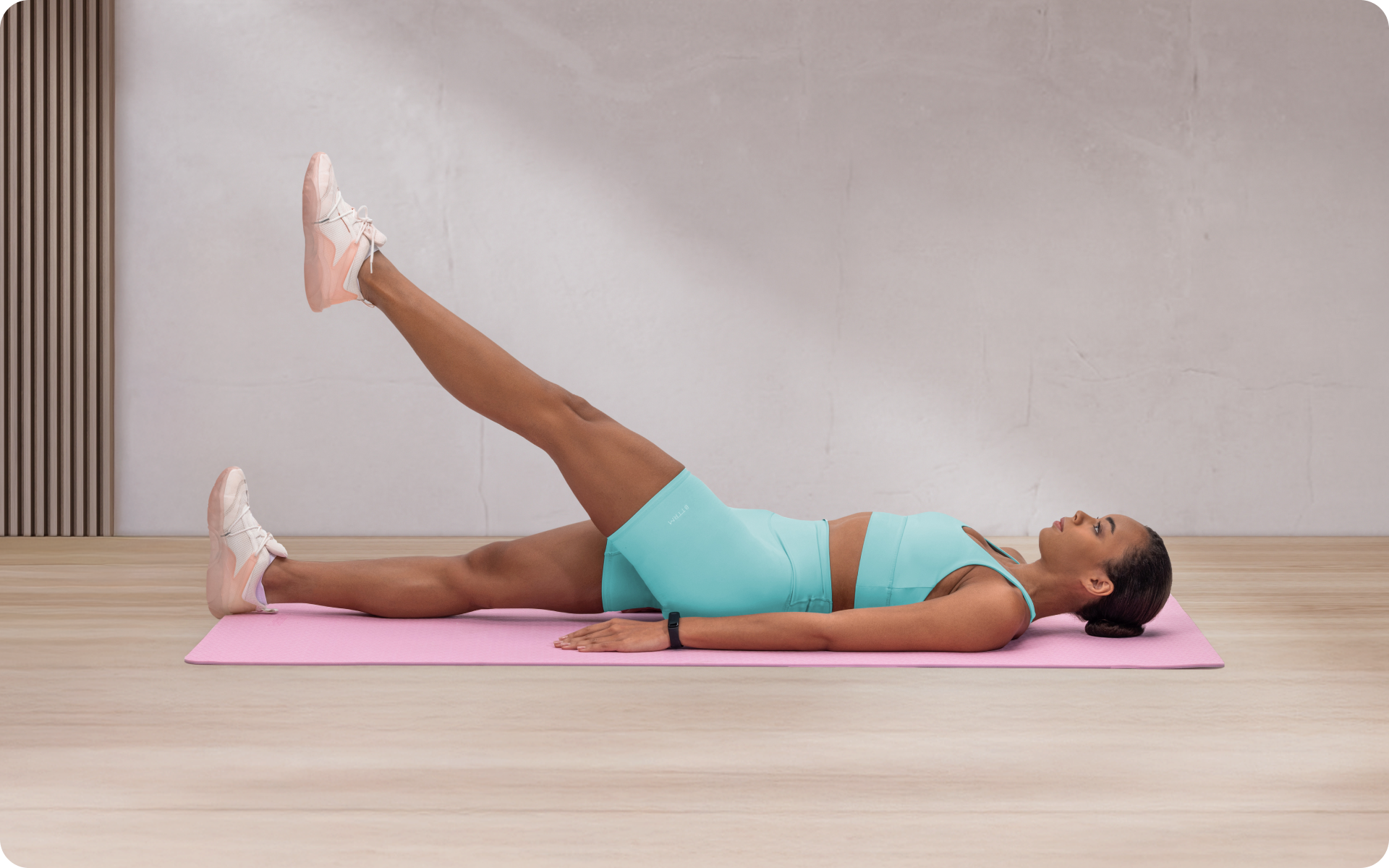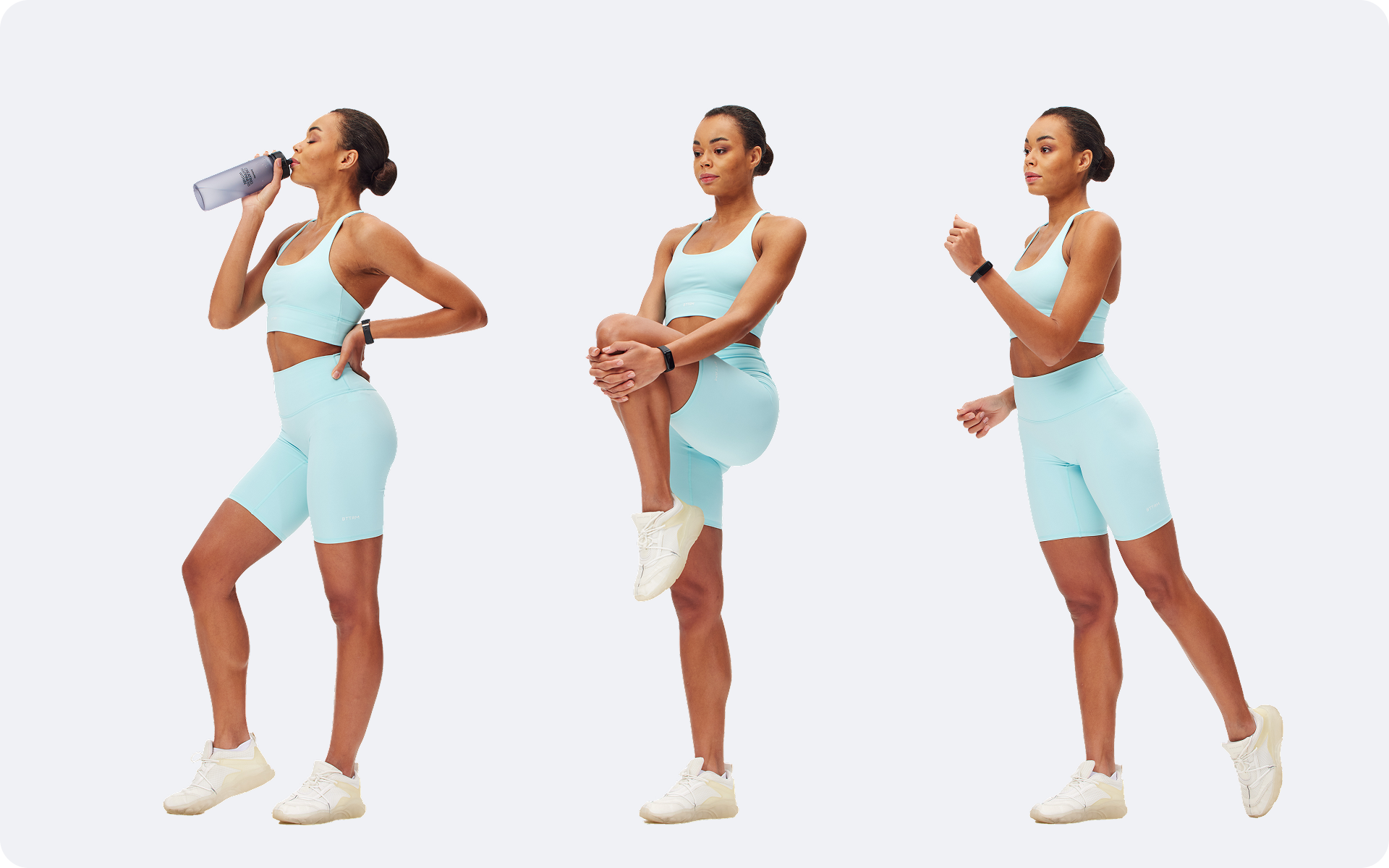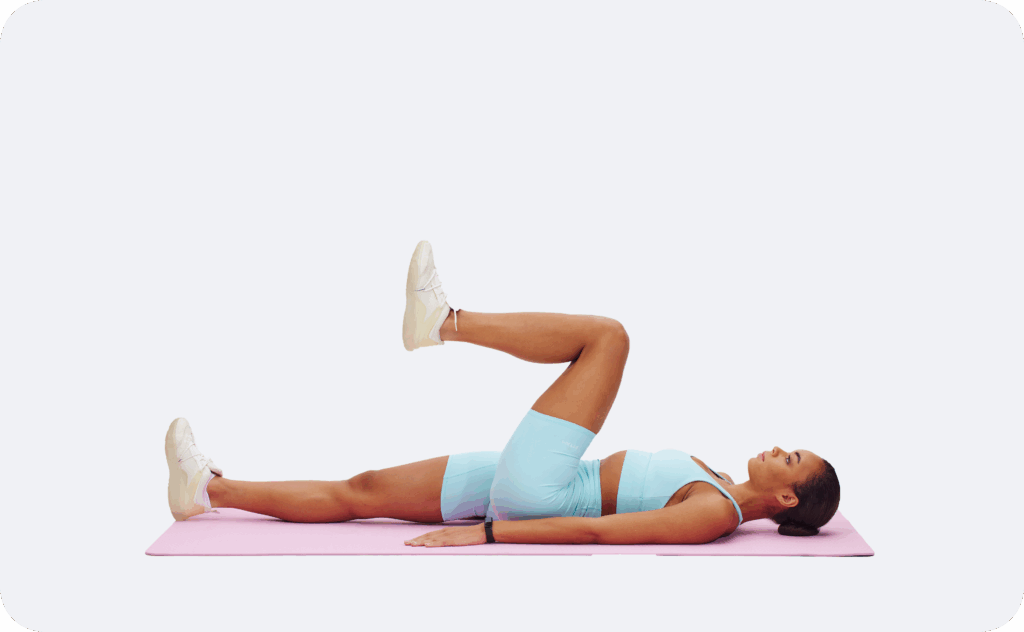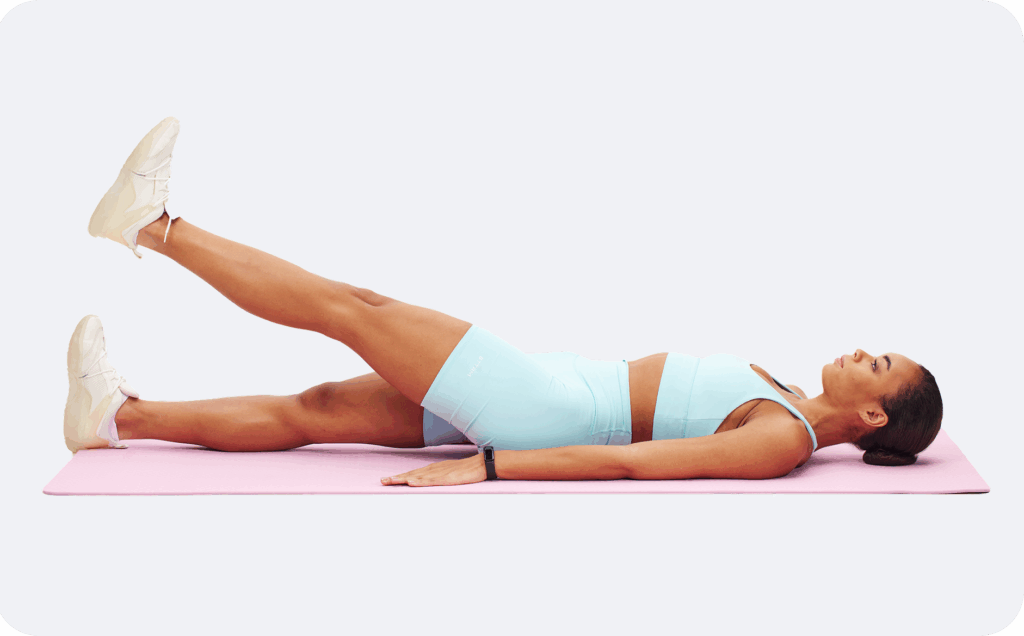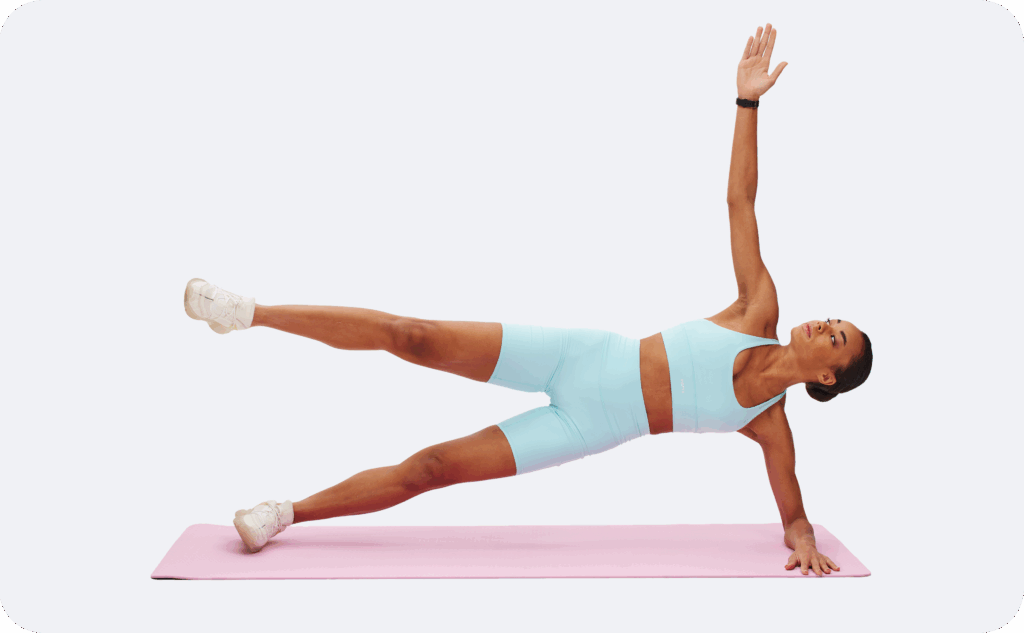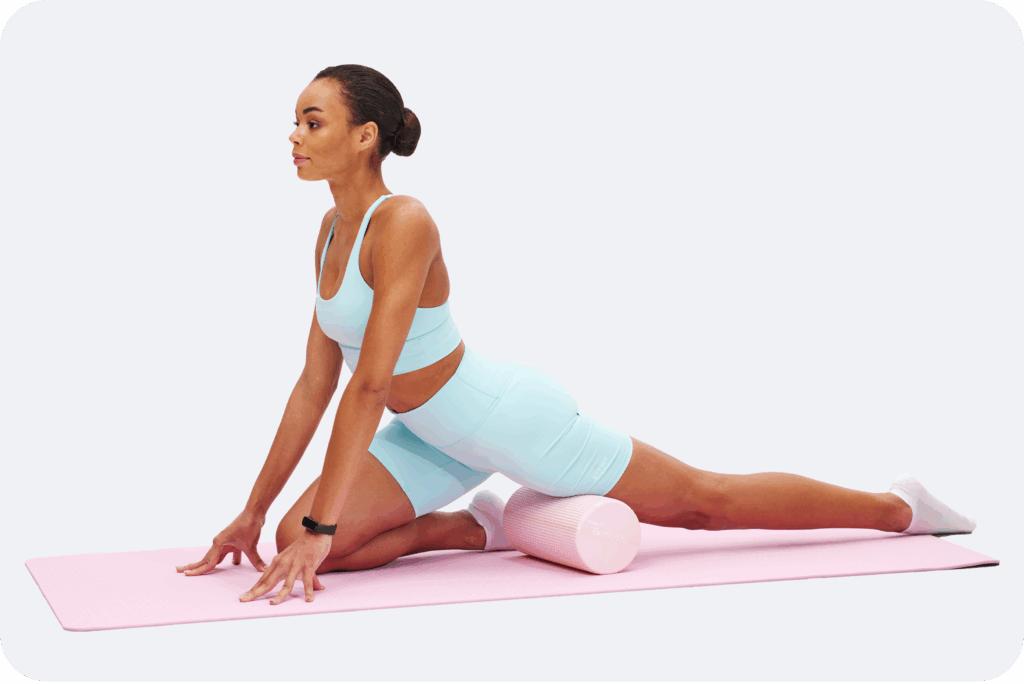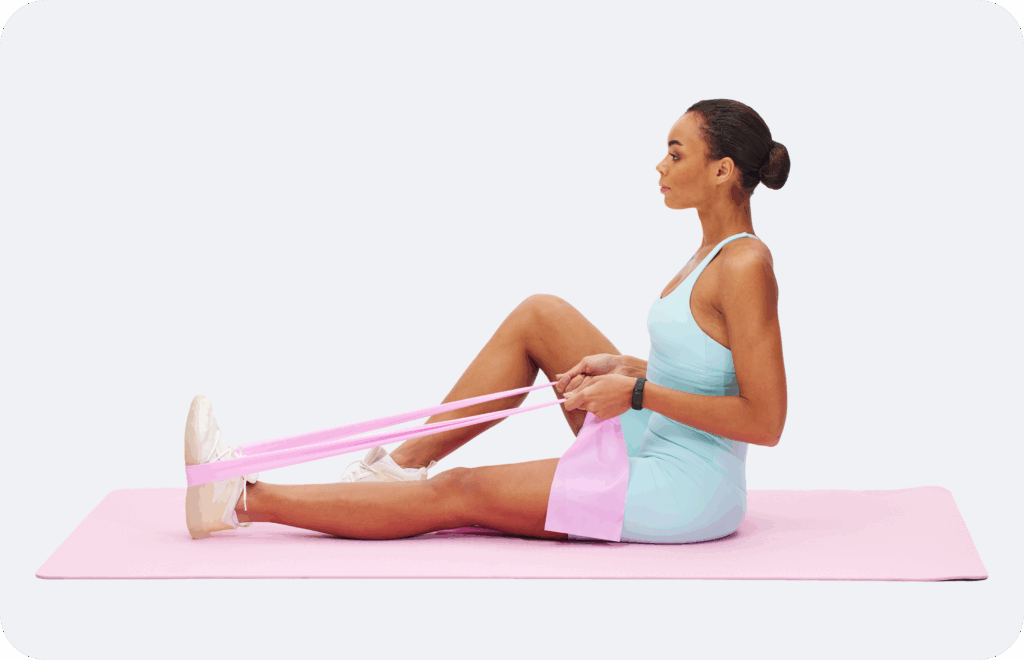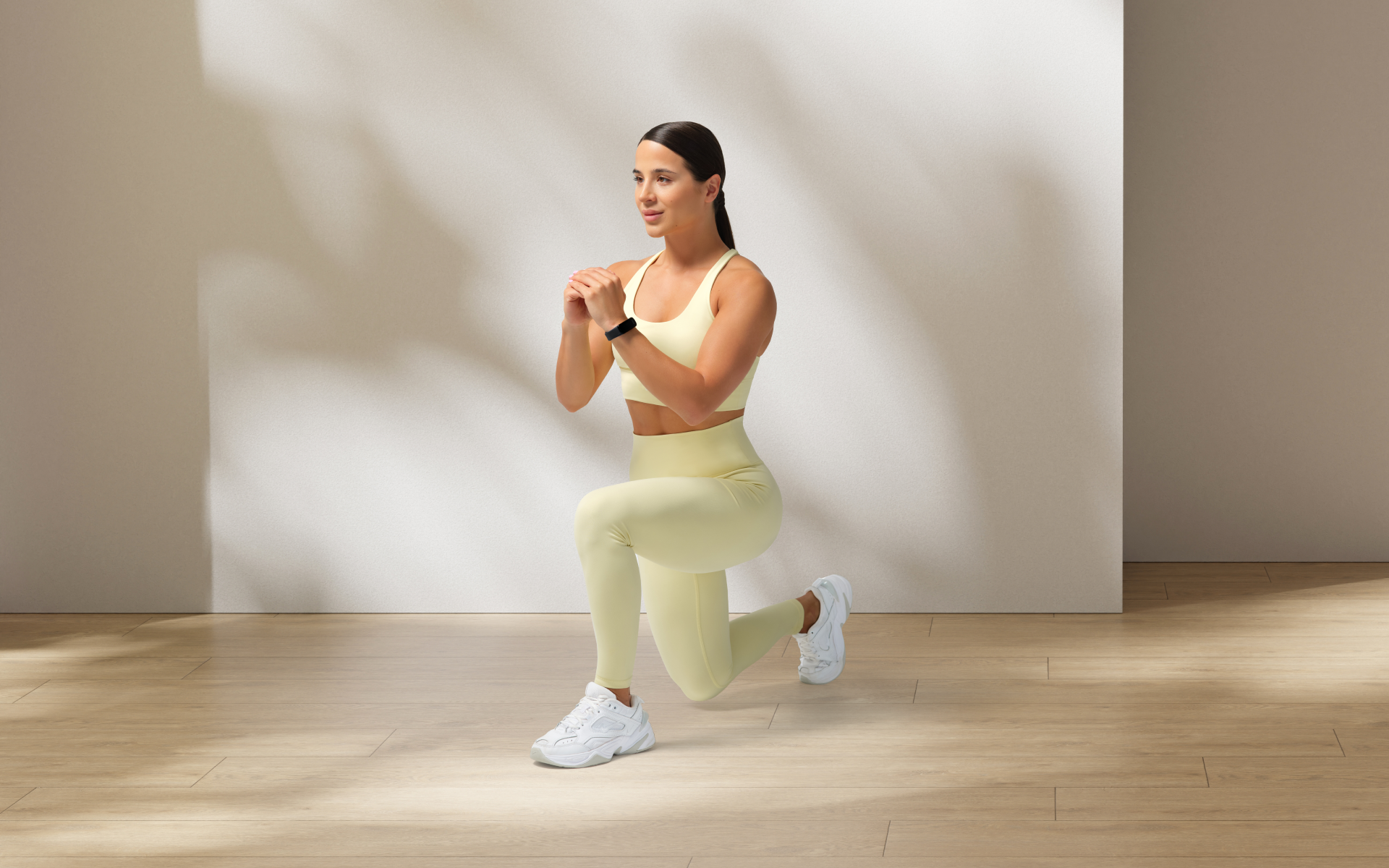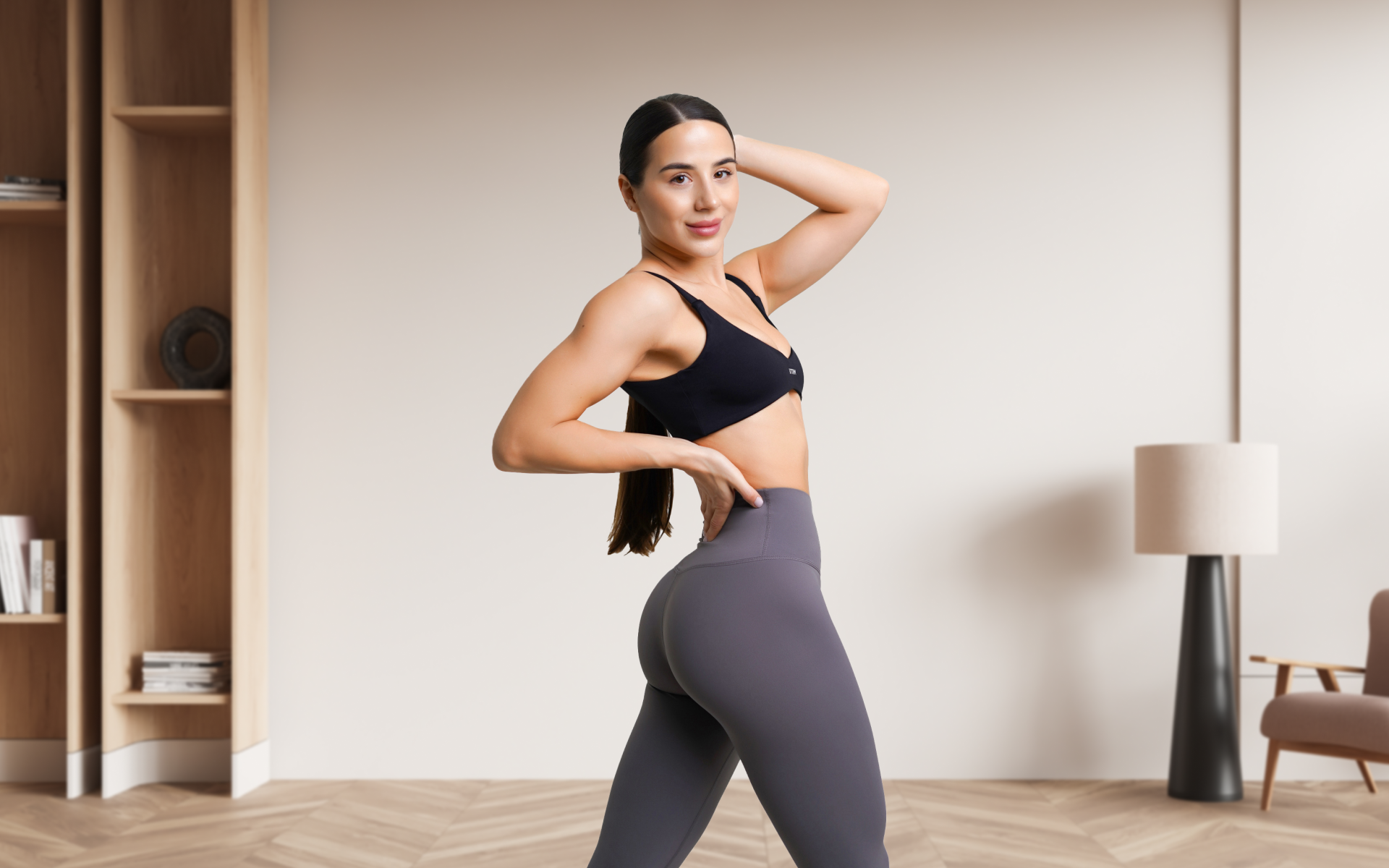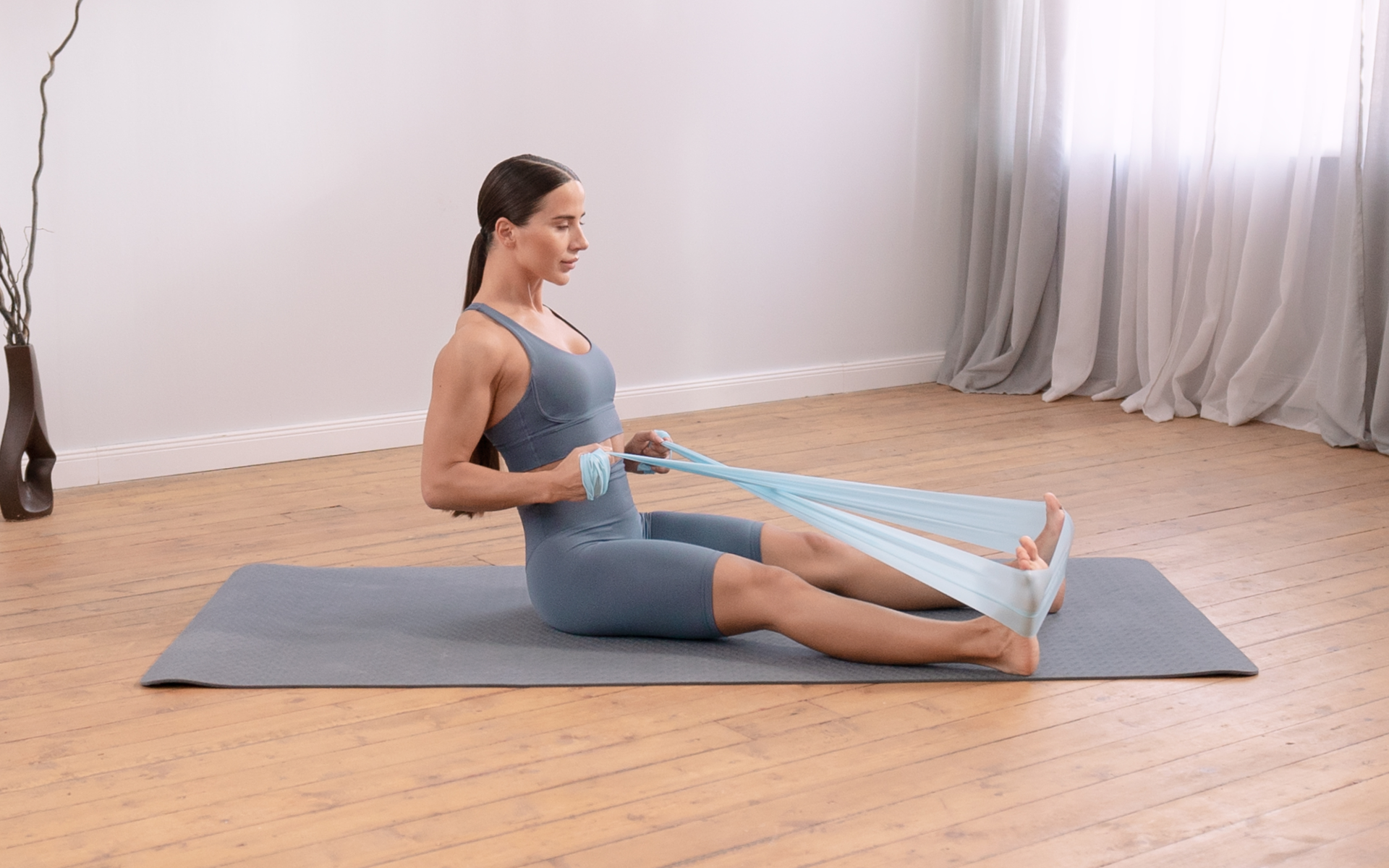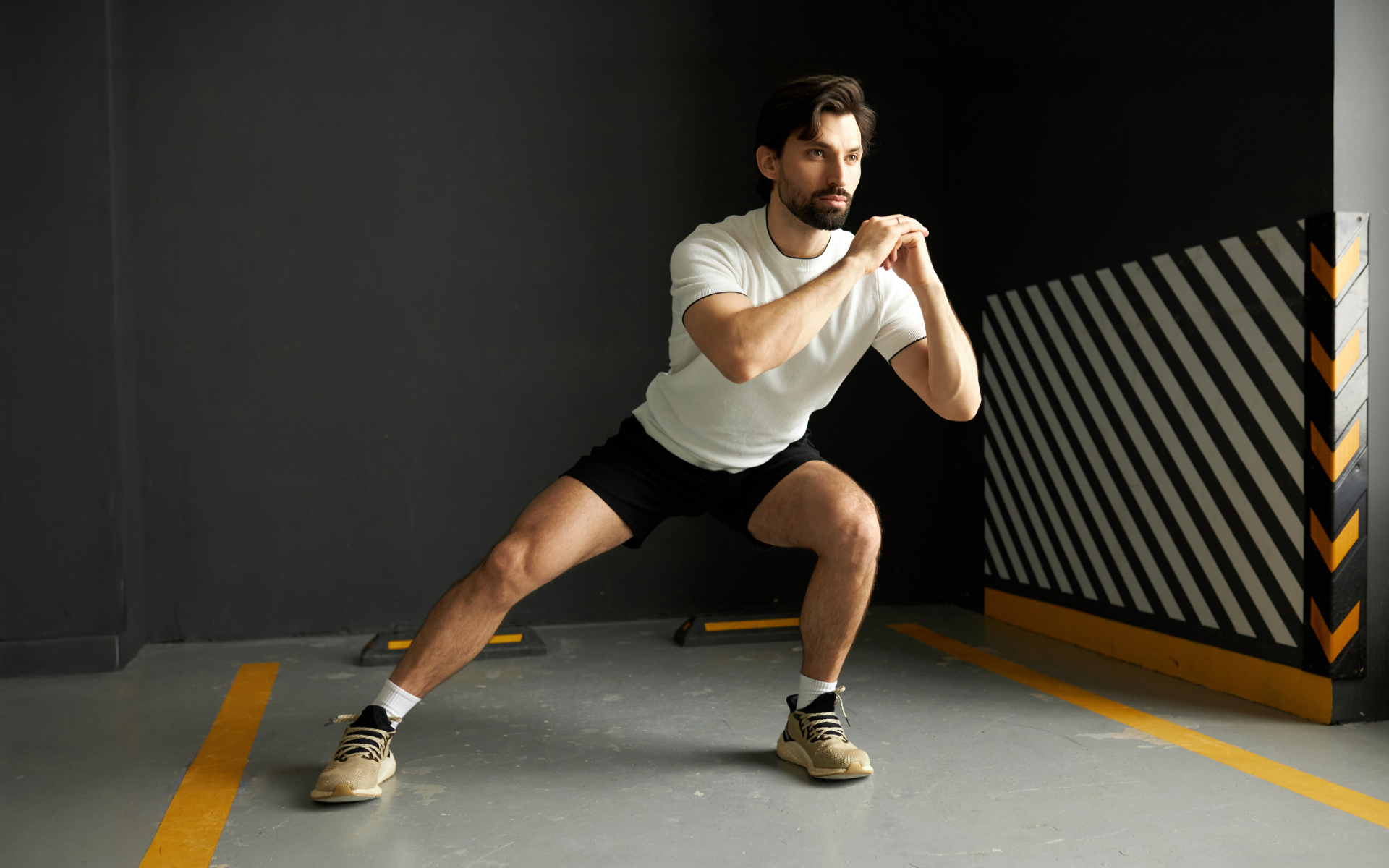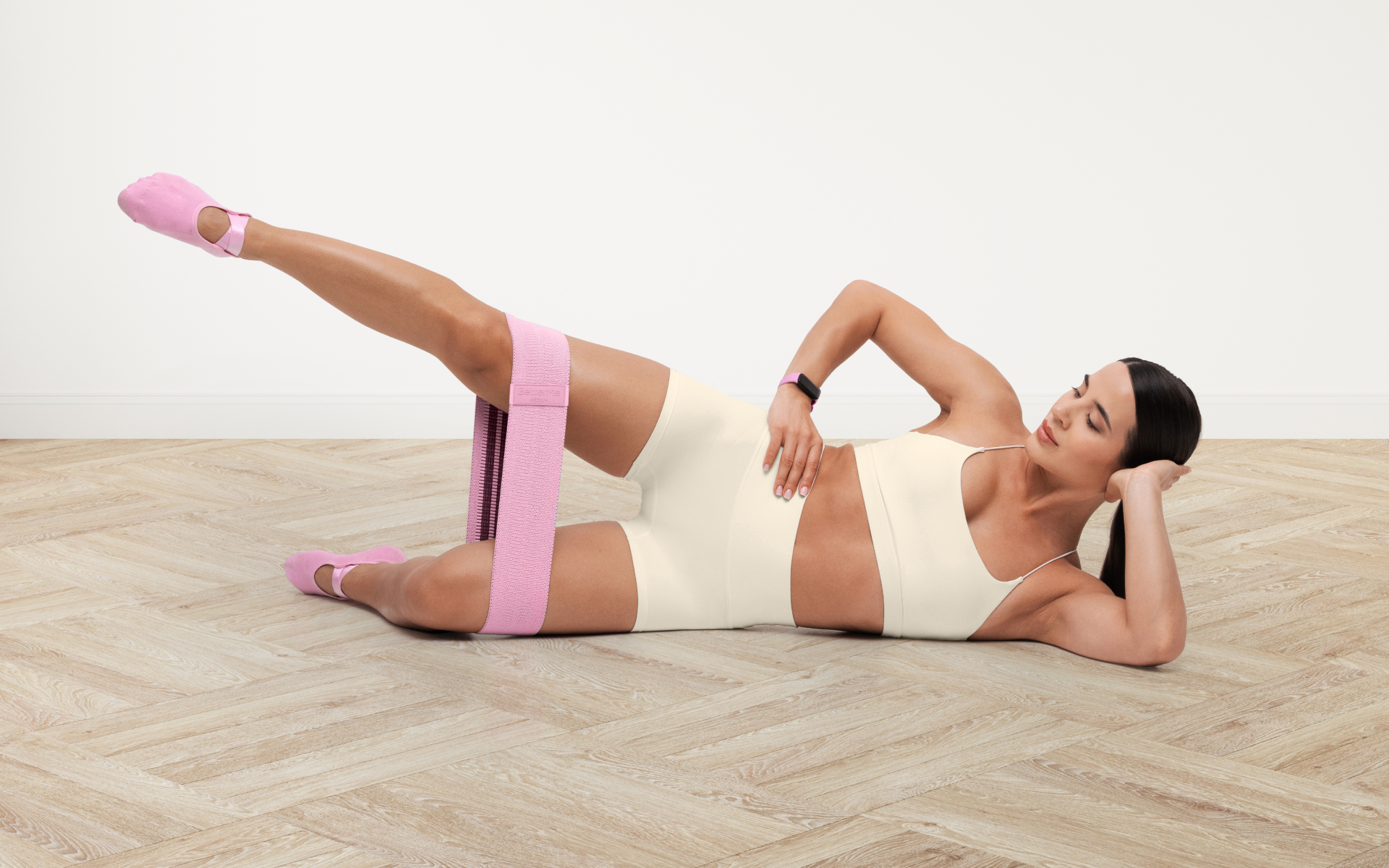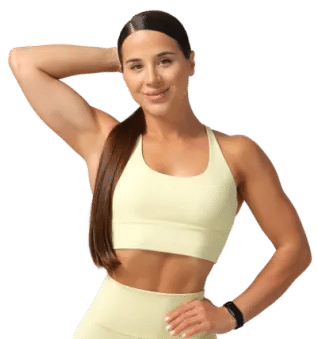Calisthenics is a type of strength training that utilizes your body weight for resistance. Calisthenics workouts include aerobic and dynamic exercises that are performed with little to no equipment.
Research on the benefits of calisthenic exercises conducted on various demographics has shown that such workouts are effective for improving posture, motor performance, agility, balance, core strength, speed, muscle strength, and body composition (1, 2, 3).
Calisthenics leg raises are among the most common exercises typically included in a calisthenics leg workout routine. Read on to learn which muscles this exercise targets, the multiple variations of leg raises, common mistakes to avoid as a beginner, and much more.
What Are Targeted Hanging Calisthenics Leg Raises?
Regular leg raises are a core and lower-body workout that can be done while lying down. Targeted hanging calisthenics leg raises are different variations of the regular leg raises. For this, you’ll be hanging from a high bar and completing a leg raise. This added challenge of attempting to hold your body weight while also raising your legs will increase the difficulty of this exercise.
By changing your movement pattern, body position, or angle, you can use these leg calisthenics exercise variations to target more muscles while still performing a similar exercise to the traditional leg raise.
What Muscles Do Leg Raises Target?
“Which muscles are worked with calisthenics leg raises?” is a question that many who are new to the exercise often ask. However, the answer is largely dependent on the variation you’re doing.
For example, regular lying leg raises target your rectus abdominis, hip flexor muscles, hamstrings, and lower-back muscles (4, 5, 6), while hanging leg raises target all the previously mentioned muscles, in addition to your external and internal obliques, forearm muscles, and shoulder girdle muscles (7). The hanging variation requires a strong grip and increased core control to prevent your body from swaying when completing each rep.
Read more: Female Calisthenics Body: The Benefits of this Routine and the Best Beginner Exercises to Try
What Are Beginner Variations of Calisthenics Leg Raises?
Here are a few different variations of leg raise exercises you can add to your core and lower-body routine to target various muscles:
Traditional Leg Raises
Also referred to as regular or supine leg raises, they work your rectus abdominis (six-pack abs), hip flexor muscles, hamstrings, and lower-back muscles.
- Lie on your back on the floor or a yoga mat. Keep your arms on either side of your body with your palms pressed to the floor/mat.
- Firmly glue your back body – i.e. from your head to your butt – to the floor. Ensure there’s no space between the floor and your lower back.
- With your feet and toes relaxed, squeeze your legs together, from your inner thighs all the way to your ankles.
- On an inhale, slowly lift both of your legs together, keeping your legs as straight as possible. Lift your legs all the way up till your body forms the letter ‘L’. If you can’t get your legs to go this high, lift them to where you feel most comfortable. You can slowly work up to the ‘L’ over time.
- On an exhale, slowly lower your legs. Don’t drop them to the ground. Instead, lower them until they hover just a few inches above the floor and stop.
- This is one rep. Repeat this movement for 8-10 reps for 1 set.
BetterMe is your fast-track ticket to long-lasting weight loss! Tailor your fitness journey and maximize your results with just a couple of swipes!
Single Leg Lying Leg Raises
Also known as the straight leg raise, this variation is often used by healthcare providers to rehabilitate patients who’ve undergone hip or knee replacement surgery. You can also add it to your calisthenics leg raises at home routine as it helps work your hip flexors, lower abs, and quadriceps (the muscle located at the front of the thigh).
- Lie back on the floor and position your body as instructed in steps 1 and 2 in the exercise variation above.
- Bend your right leg at a 90-degree angle and plant this foot firmly on the ground.
- Contract the quadriceps in the left leg, and on an inhale, slowly lift this leg approximately six inches off the floor.
- Hold this position for 3 seconds.
- On an exhale, slowly lower your left leg back to the floor/mat.
- This is one rep. Repeat the movement 8-10 times for one set, and then switch to the other leg and follow all the steps on this side.
Alternating Leg Raises
This beginner-friendly variation largely targets your lower abs and hip flexors, while also working the quadriceps, hamstrings, and glutes to some extent.
- Begin by lying flat on your back with your arms at your sides and your legs straight. You can also put your hands underneath your lower back for support.
- Pull your belly button to your spine to engage your core and press your lower back into the floor.
- Slowly lift one leg off the ground and raise it as high as you can. Go as high as your flexibility allows without pain and hold for 3 seconds. Keep the other leg extended and relaxed on the floor.
- On an exhale, slowly lower the raised leg. This is one rep.
- Repeat on the alternate leg for another rep.
- Keep alternating the legs till you’ve completed 8-10 reps per leg.
If you want to challenge yourself a bit more, lift both legs slightly off the floor so they remain balanced in the air. Slowly lift one leg as far up as it can go, then lower it back till it meets the other ‘floating’ leg. This counts as 1 rep for that leg. Alternate for a rep on the other leg. Perform 8-10 reps per leg for 1 set and remember not to let your legs drop to the ground for the entire set.
Side-Lying Leg Raises
Unlike other variations that primarily target the core, specifically the abs, this variation largely works your hip abductors, which include the gluteus medius and gluteus minimus. It also works the muscles in your lower back, obliques, and outer thigh.
- Lie down on your right side on a yoga mat or the floor. Keep your body in a straight line with your legs extended and your feet stacked on top of each other.
- Bend the arm that’s in contact with the floor/mat at the elbow and cradle your head for support. Place your left hand out front for extra support or let it rest on your leg or hip.
- On an exhale, gently raise your left leg off the lower leg. Raise it as high as you can and stop when you feel the muscles flex in your lower back or obliques. Hold for 3 seconds.
- On an inhale, lower the leg back down to meet the right leg, stacking your feet again. This is one rep.
- Repeat 8-10 times, then switch to the other side and repeat.
Are you looking for more lower-body workouts? Check out this article for our list of the best leg exercises.
Are Leg Raises Good for Calisthenics?
Yes, they are. As earlier explained, calisthenics are exercises that only require your body weight (as well as gravity) to complete. Leg raises, particularly beginner-friendly variations, rarely require any equipment to complete, which makes them fantastic for a calisthenics workout routine.
BetterMe will shake off your mental funk, rid you of your energy-zapping habits, and help you sculpt the body of your dreams. Intrigued? Hurry up and change your life for the better!
Which Equipment Enhances Leg Raises?
While you don’t need equipment to perform leg raises, you can enhance the exercise with equipment or free weights. Examples include:
- Pilates ball – You can hold the ball tightly between your legs while doing weighted lying leg raises. This will engage your inner thighs (adductors) to keep the ball in place.
- Plates, dumbbells, or kettlebells – You can place and hold either of these free weights on your thigh to help add resistance when performing weighted side-lying leg raises.
- Ankle weights – Strap these on your ankles and use them while doing any of the multiple variations of this workout.
- Resistance bands – If you don’t have access to free weights, resistance bands are a great, cheaper, and compact alternative that come in handy to help add resistance to any variation of the exercise that can be done with free weights.
- Weighted vest – While hanging leg raises may not be beginner-friendly, they’re still a variation you’ll eventually end up doing if you keep up with training and improve your muscle strength and endurance. Using a weighted vest for the exercise will help increase the overall load during the workout.
What Are Common Mistakes in Leg Raises?
Some common mistakes to avoid when performing this workout include:
- Arching Your Back
Most people often have a curve in their spine, specifically in the lower back, when performing lying leg raises. To avoid this, make sure you keep your entire back glued to the floor throughout the exercise. You can also try not lowering your legs very far to the ground to help reduce this spine curvature.
- Lifting or Lowering the Legs Too Fast
Don’t swing your legs up and down. Use slow and controlled movements as you lift and lower your legs through all variations of the workout.
- Not Engaging the Core
Keeping your core engaged through this exercise will enhance the effectiveness of the exercise, which will help ensure other muscles aren’t overcompensating, a fact that could lead to injury. An engaged core can also help keep you more stable and balanced throughout your workout sets.
To engage your core, breathe in through your chest and then breathe out through your stomach. Breathing out through your stomach will force your body to further contract the abdominal muscles and tighten the core. Keep breathing as normal and continue with your workout.
Read more: The Best Quad-Focused Exercises for Home or Gym
What Are the Full-Body Benefits of Calisthenics Leg Raises?
Due to the hanging aspect of this exercise, your entire body will be engaged to hold your body weight up and to avoid swaying as you swing your legs, while the lying leg raise benefits are primarily limited to the core and lower-body muscles. However, in daily life, a stronger core and legs offer incredible benefits and can help make your daily movements more efficient.
The stronger your core is, the better your balance and stability will be. In athletes, this often means better endurance and flexibility, which can help enhance performance in numerous sporting activities (8, 9).
For non-athletes, better balance and stability help prevent falls and improve functional activities such as bending, lifting, twisting, and standing. A stronger core also helps improve your posture and can help with the management or prevention of lower-back pain.
Training and strengthening your legs also helps improve your athletic performance and functional fitness, which makes day-to-day activities easier.
The biggest challenge in doing leg raises comes from either weak core muscles, tight hip muscles, limited flexibility, or a combination of all three. With time and consistency with your training plan, leg raises will start feeling easier, so much so that you may start to look for more intermediate or advanced variations to do. While this exercise and its multiple variations are good for the core, it’s unlikely that they will be enough on their own to significantly develop the core. If you want to get that sought-after 6-pack, you need to do leg raises alongside other core exercises such as planks, dead bug, torso twists, bird dog, weighted wood chop, farmer carry, or cable pull-downs. You should also remember that the most important aspect of obtaining 6-pack abs is your body fat percentage. Without a low body fat percentage, the rectus abdominis won’t be as visible. In order to decrease your body fat percentage, you’ll need to make healthy eating choices that allow your body to be in a calorie deficit. When your body is in a calorie deficit, it will burn body fat to use as energy. This will ultimately make your total body fat decrease over time. Yes, they are – at least according to a study that was published in the Journal of Back and Musculoskeletal Rehabilitation in 2019. In this study, researchers looked at the muscles worked during planks and bilateral leg raises (aka lying leg raises). At the end of the study, they found planks to be better for activating the obliques, while leg raises were better for activating the rectus abdominis (i.e. the six-pack abs (10). If you want a well-rounded, strong core plus abs, we suggest including both planks and leg raises in your routine. Yes, leg raises can help make your waist smaller, but not on their own. The best results will come from a routine that combines leg raises with other core workouts, strength training exercises, cardio, and a healthy, calorie deficit diet.Frequently Asked Questions
Why are leg raises so difficult?
Are leg raises good for your abs?
Are planks better than leg raises for abs?
Do leg raises make your waist smaller?
The Bottom Line
Calisthenics leg raises are great exercises to add to your no-equipment workout routine. They help strengthen your core and lower-body muscles, which can improve your day-to-day life and athletic performance. Ensure progressive overload by increasing the amount or reps, using resistance bands, and choosing harder variations to keep improving your muscle strength. With that being said, the best results will come from a well-rounded routine. Make sure to perform other strength training exercises, do cardio, and eat a healthy diet to help you reach your desired goals.
DISCLAIMER:
This article is intended for general informational purposes only and does not serve to address individual circumstances. It is not a substitute for professional advice or help and should not be relied on for making any kind of decision-making. Any action taken as a direct or indirect result of the information in this article is entirely at your own risk and is your sole responsibility.
BetterMe, its content staff, and its medical advisors accept no responsibility for inaccuracies, errors, misstatements, inconsistencies, or omissions and specifically disclaim any liability, loss or risk, personal, professional or otherwise, which may be incurred as a consequence, directly or indirectly, of the use and/or application of any content.
You should always seek the advice of your physician or other qualified health provider with any questions you may have regarding a medical condition or your specific situation. Never disregard professional medical advice or delay seeking it because of BetterMe content. If you suspect or think you may have a medical emergency, call your doctor.
SOURCES:
- The effects of a calisthenics training intervention on posture, strength and body composition (2017, researchgate.net)
- The effect of calisthenics training on physical fitness parameters and sports specific skills of soccer players: a randomized controlled trial (2022, advrehab.org)
- The impact of calisthenics on muscular endurance, balance, and agility in young females with and without flexible flatfeet: a comparative study (2025, link.springer.com)
- Which trunk exercise most effectively activates abdominal muscles? A comparative study of plank and isometric bilateral leg raise exercises (2019, researchgate.net)
- Analysis of the Effects of Double Straight Leg Raise and Abdominal Crunch Exercises on Core Stability (2021, ijmsdr.org)
- Comparison of muscular activities in the abdomen and lower limbs while performing sit-up and leg-raise (2016, pmc.ncbi.nlm.nih.gov)
- Muscle activity and spine load during anterior chain whole body linkage exercises: the body saw, hanging leg raise and walkout from a push-up (2015, pubmed.ncbi.nlm.nih.gov)
- Effects of Core Training on Sport-Specific Performance of Athletes: A Meta-Analysis of Randomized Controlled Trials (2023, pmc.ncbi.nlm.nih.gov)
- The Effect of 12-Week Core Strengthening and Weight Training on Muscle Strength, Endurance and Flexibility in School-Aged Athletes (2022, mdpi.com)
- Which trunk exercise most effectively activates abdominal muscles? A comparative study of plank and isometric bilateral leg raise exercises (2019, journals.sagepub.com)
